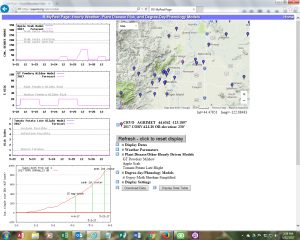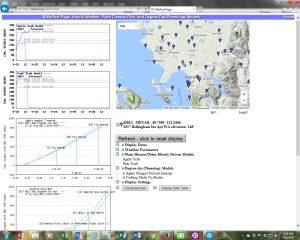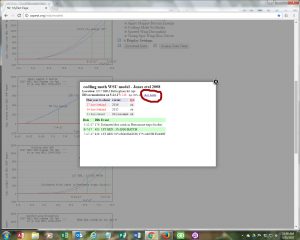It’s time to track heat units so you can control codling moth and apple maggot in your orchards. If you haven’t set up this tool for yourself at home, I’ll walk you through the steps.
The past two summers have been hard ones for the home orchardist. Both codling moth and apple maggot pressures were high. The warm temperatures allowed both pests to have several generations. Controlling these two insects take attention to weather to get the timing down for control. Today we’ll look at controlling the codling moth. (The link is from PNW Handbooks- more Eastern WA centered, but still useful info).
Codling moths overwinter as mature larvae in cracks in tree bark, in leaf litter, just below ground, and where culled apples were dumped. The moths begin to emerge as the apple bloom finishes. The moths begin mating and laying eggs when evening temperatures are above 55°F. The eggs take 8-14 days to hatch, then the larvae bury into the young fruit to feed. Controlling the pest by spraying means you need to track accumulating Degree Days to know when the moths are likely laying eggs.
The most useful tool we have found is online pest models. One of the easiest to use is at USPest.org. I highly recommend you set this up for yourself and start playing with it. It is an incredible tool!
 When you first go to this page, the default is set to Corvallis, OR. (pink pin) and there will be several pest and disease models selected. Use the map tool to drag the map to your location. For most people in Western Whatcom county, you can choose the Bellingham Airport weather station to run your models. Or, if you are not close to the airport, choose the weather station closest to you. After you’ve selected a weather station, refresh the display.
When you first go to this page, the default is set to Corvallis, OR. (pink pin) and there will be several pest and disease models selected. Use the map tool to drag the map to your location. For most people in Western Whatcom county, you can choose the Bellingham Airport weather station to run your models. Or, if you are not close to the airport, choose the weather station closest to you. After you’ve selected a weather station, refresh the display.
Next, click on the Plant Disease models + sign. This will give you options to add or subtract models you want to track. For the home orchardist, tracking apple and pear scab might be useful. There is also a mummyberry model for blueberry growers. Add or remove what you want.
Then click on the + sign. These are the pest models. The most useful ones to add for codling moth and apple maggot are the Codling Moth No Biofix model and the Apple Maggot Percent Emerged Model. Add these two models (and remove the Gypsy Moth one) then click Refresh Display. Now bookmark this as My Pest Page.
On the left side of the screen, the running models will display as graphs. You can click on a graph to see actual accumulated Degree Days. Click on the small show details link (red circle on image) to see the weather data table. It will give you where we are, and historical forecast for DD accumulation. The goal with codling moth is to time your first spray at 500-525 DD. As of May 17, the Bellingham Airport site registered 273 DD, with the historical data forecasting reaching our target around June 12-16.
This is a tool that requires you to check it often so you can time it for your location. If you’re using a weather station more inland, you will likely accumulate heat/degree days quicker. If you’re close to saltwater, the benchmark of 525 DD may take longer to reach.
One warning, not all weather stations will work with this tool. Some do not track temperatures often enough to be useful. If your models don’t seem to be working or the graphs from them are missing, try another weather station, then refresh and try the models again.
The first recommended spray for codling moth should go on at about 525 DD, which we hit June 8 in 2016. This year, we might not get there until mid June. The easiest organic spray for codling moth is Spinosad. Spinosad is available to the homeowner as Monterey Garden Spray, Bonide Deadbug Brew and Green Light Bioinsecticide, plus others. For the larger grower, it can be purchased as Entrust. Adding 1% summer oil to the tank makes it even more effective by smothering eggs that have not hatched. Spinosad is toxic to bees when wet. Apply early in the morning or late in the evening when bees are not foraging!
Another organic control for codling moth has recently become available to the home scale orchard- granulosis virus, under the brand name CYD-X. It is somewhat expensive (and needs refrigerated storage), and timing is even more critical than when using spinosad, with the first application when the moth eggs start to hatch, between 395 and 400 DD, with reapplication in 7-10 days. But this virus is only toxic to codling moth, so is safe to spray even when bees are foraging. Some extension services report that mixing the virus with small amounts of brewers yeast or milk and molasses in the tank makes it more effective.




Wow, great tools and great information! I look forward to using this right away. Thank you for sharing this.